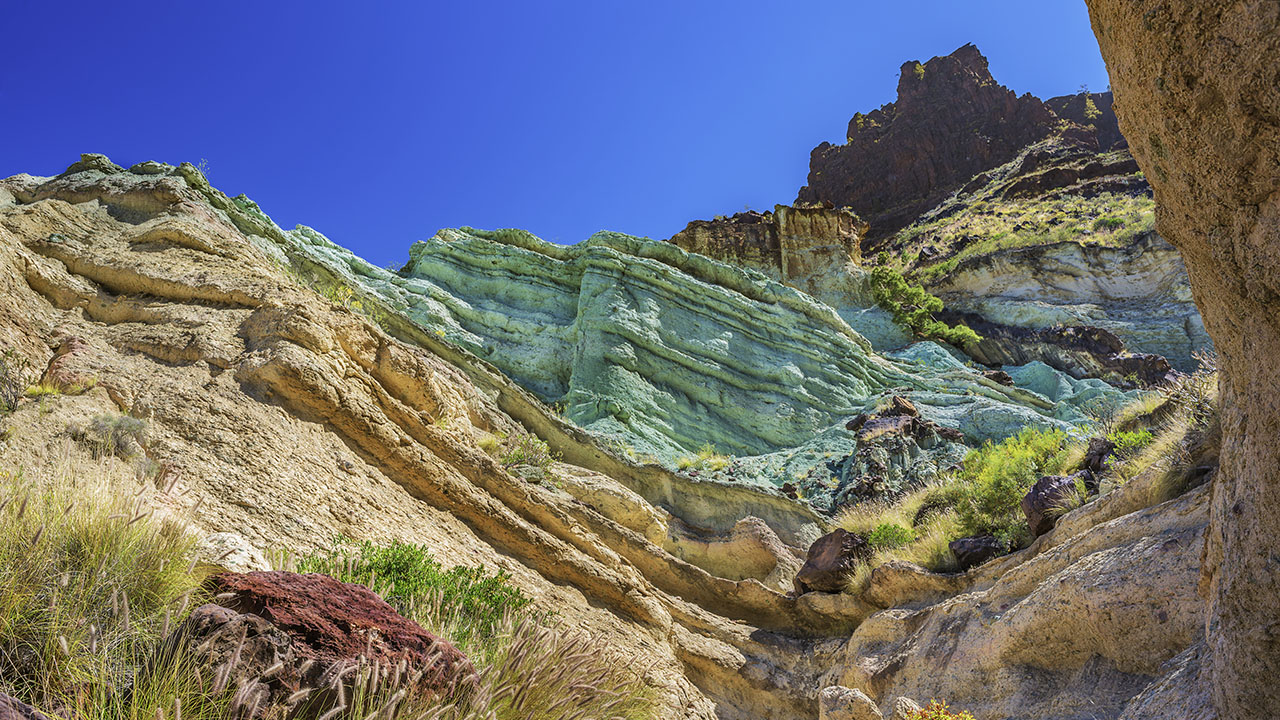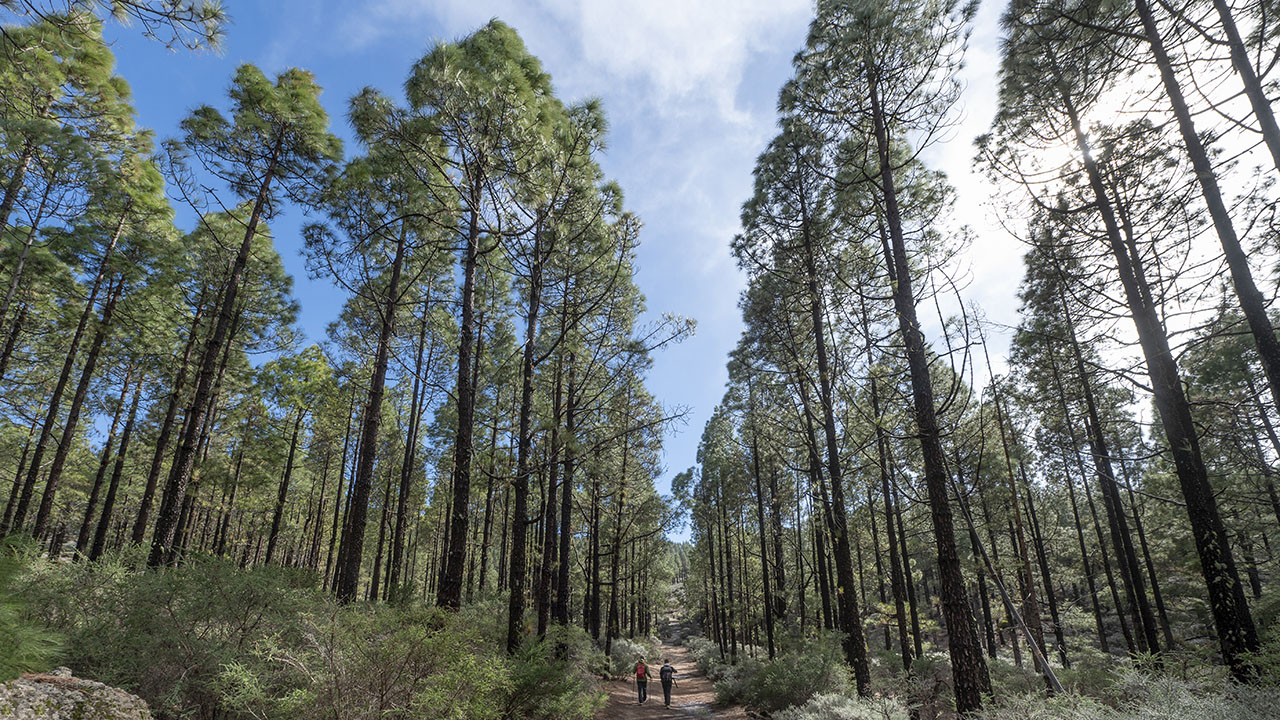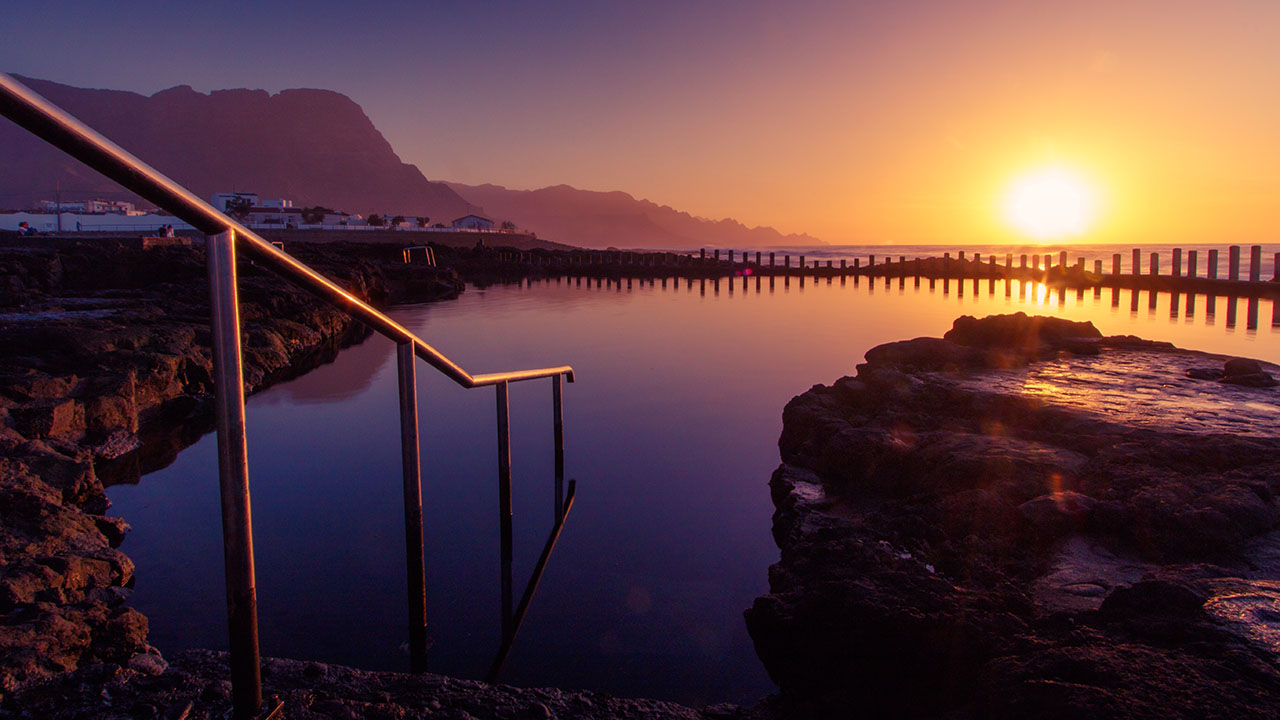Los Azulejos Route, Gran Canaria’s secret revealed by time
The spectacular jade green outcrops and ochre and reddish tones laid bare by erosion are the result of the explosive meeting between fire and water as the island was formed.
The canvas is provided by the walls of the westerly cliffs on the Inagua massif. The natural work of art that draws your gaze as you drive along the road from La Aldea de San Nicolás to Mogán, in Gran Canaria, has been created by lava and water, as they came together in the process which formed the island millions of years ago. Despite the power of this reaction, it forged a delicate piece.
Beauty was hiding behind the cloud of smoke produced by fire and time. Erosion has slowly lifted the blanket that covered strokes of colour several tens of metres wide, the result of hydrothermal processes that mark the route along the GC-200. This road is a real geology museum that also branches off towards some of the most remote spots on the island, from Tasartico and Tasarte to Veneguera.
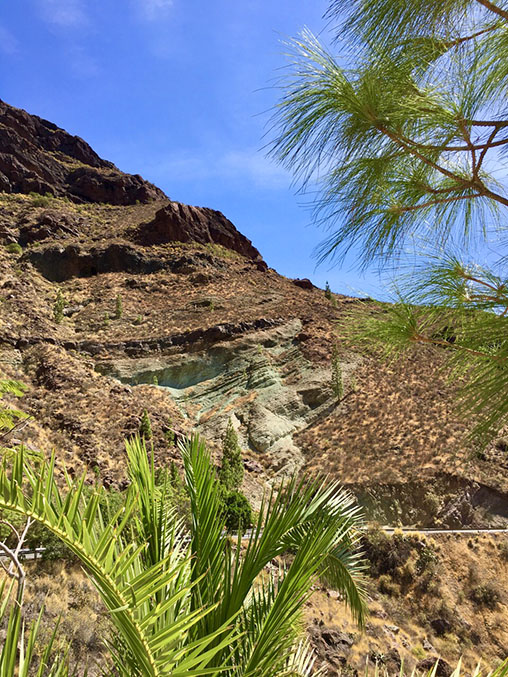
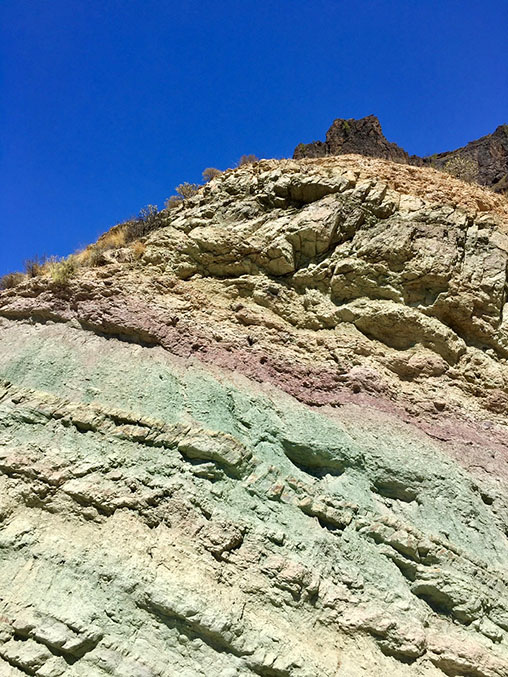
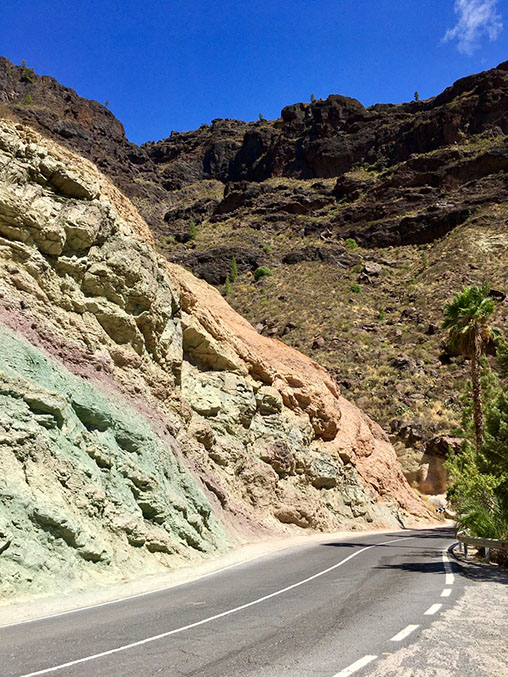
The sun beats down on this landscape featuring large, solitary rocks bearing witness to other times, islets of stone in a rocky ocean and Canary Palm trees that have crept into every crack to flourish. You can truly drink in the landscape by stopping to enjoy a tropic fruit juice, made from local produce: Indian figs, mangoes or papaya.
The erosive processes raised the curtain slowly to reveal this spectacular geological scene. The outcrops, appropriately called Los Azulejos (the tiles) by the local population, shine like the scales on a mythological animal. Jade green blends in with ochre and reddish tones. If you arrive from La Aldea, you’ll spot the first glints as you drop down from the Andén Verde, in Las Tabladas, although the brightest sparkle at the head of the large Veneguera basin.
The GC-200 road snakes through one of the most ancient areas of Gran Canaria which becomes a lengthy viewpoint over basalt cliffs and ravines that seem to call out to us, both to climb their crags and clamber down to their river-bed that heads for the coast as decisively as a falcon might dive for its prey.
If you wish to delve into the mysteries of this territory, higher up you’ll find the Inagua and Tamabada nature reserves, pine forests, tree houseleeks, Ceropegia dichotoma, hairy-fruited broom and other native species, including birds and insects, such as the strange local grasshopper that hides among the balsam spurge and looks like it has been frozen in time, although this is the perfect place to spend eternity.
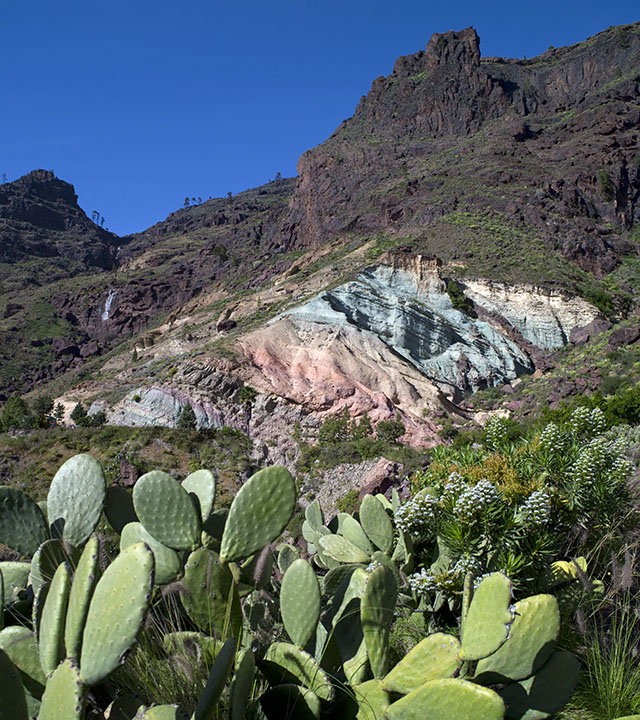
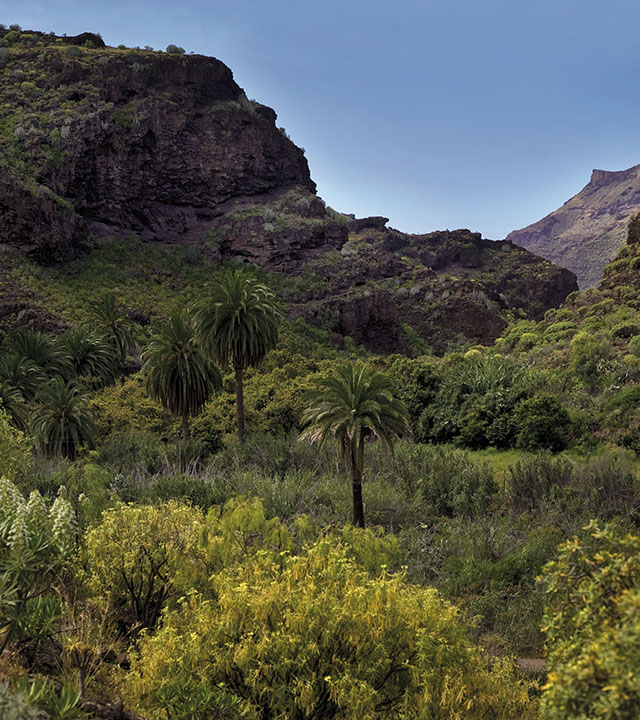
On the contrary, if you decide to drop down to the coast, you’ll find wild beaches, protected, as if to hide them, by the stone arms at the end of the ravine, although these spots tell never-ending stories.
The Veneguera ravine, on the Mogán coast, stretches along the slopes and the river-bed is dotted with small dwellings, tropical crops, palm trees, scrubland, olive trees, dwarf junipers and massive cactus plants. Strolling around the Almácigo Houses helps you appreciate the mark that humans have left in these places before diving into other depths, the Atlantic, eight kilometres from the village.
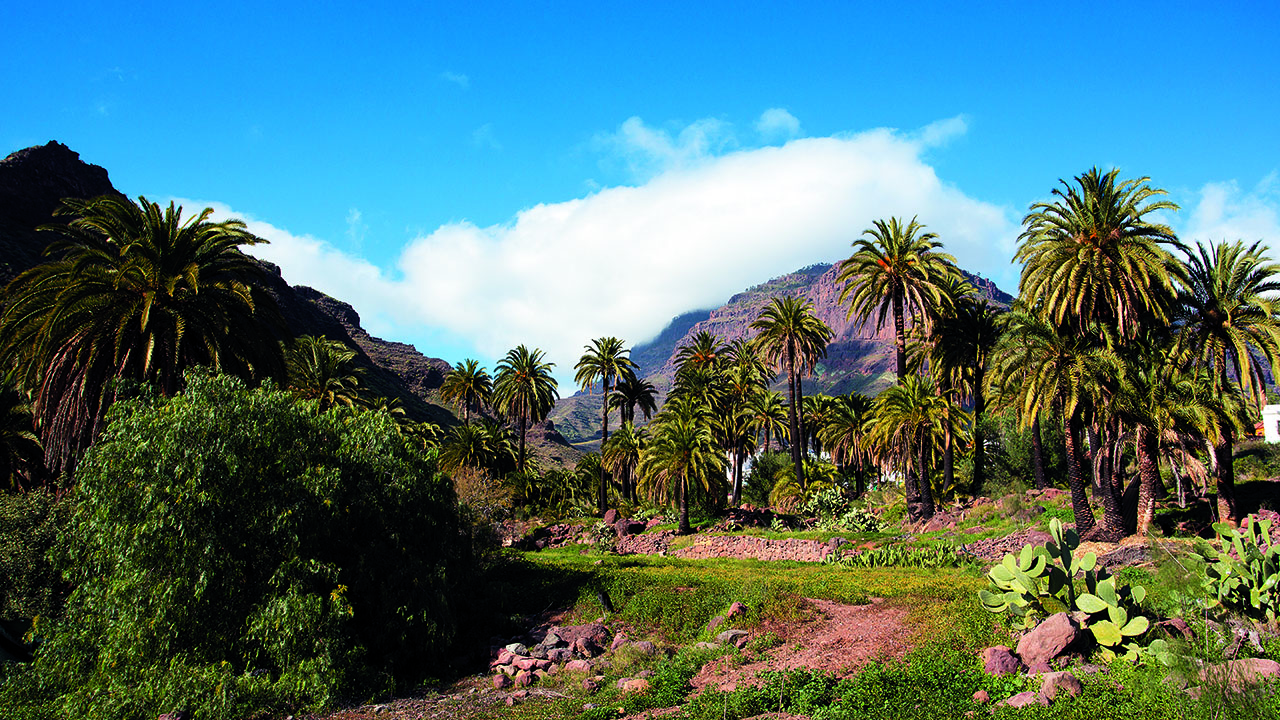
In Tasartico, the main town in La Aldea de San Nicolás district, there is a rocky beach with crystalline waters and amazing sunsets that can only be reached on foot along a path almost seven kilometres long. Take plenty of water as it is usually hot in this part of the island most of the year.
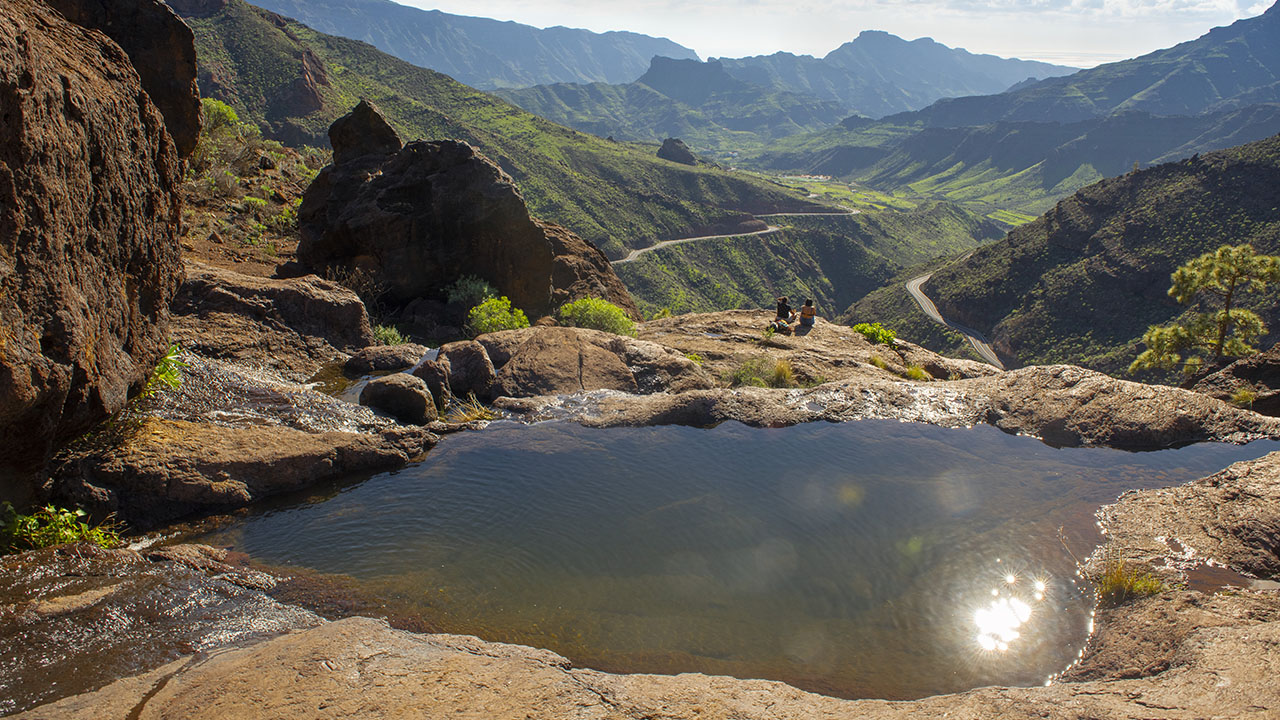
Tasarte is another gem in Gran Canaria’s geological treasure chest. This ravine gives you a fine display of unexpected features, including a practically perfect pyramid-shaped mountain, a pine forest ringing to the sound of woodpeckers pecking the bark of the trees and one of the few refuges for the endemic blue chaffinch. Take the dirt track to the mouth of the river and you’ll find the ocean, lazing on the shore.

